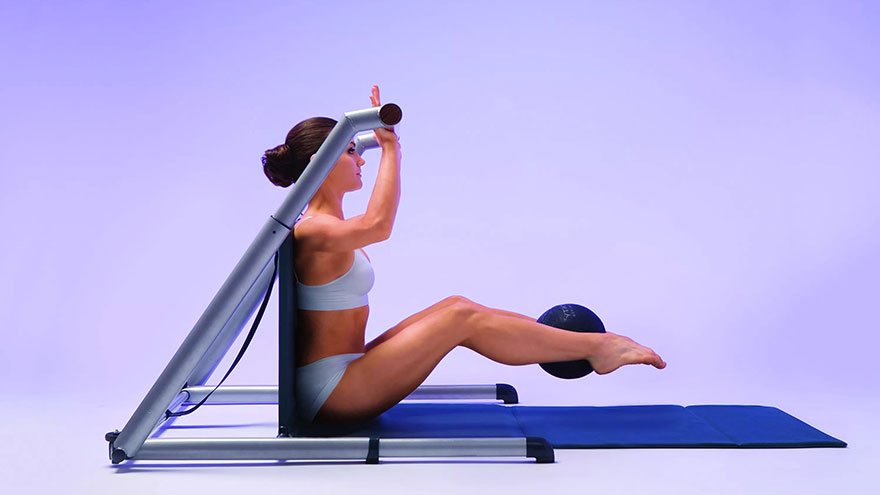Pilates vs. Fluidity Bar
Both the Pilates method and Fluidity Bar workouts promise practitioners a longer, leaner body. Both forms of exercise incorporate movements designed to strengthen the body’s core while improving flexibility and sculpting the arms and legs. While both may help you make strides toward a dancer-like physique, Fluidity Bar and Pilates are distinct exercise methods with differing exercises, histories and equipment.

History of Pilates
German-born Joseph Pilates developed his unique exercise method while interred in a prison camp during World War I. He combined elements of yoga, martial arts and athletic conditioning practices into a series of exercises designed to promote total-body health through strengthening the core — a group of muscles that includes the the abs, obliques, lower-back muscles and gluteals. After opening a studio in New York City, Pilates earned a following among dancers and choreographers who used his method to strengthen their bodies and recover from injuries. After Joseph Pilates death in 1967, former students continued his legacy by teaching the Pilates method at studios across the United States.
History of the Fluidity Bar
Fitness instructor Michelle Austin created the Fluidity Bar and Fluidity Method after years of teaching Lotte Berk’s ballet-barre-based exercise classes. Austin began teaching her Fluidity Bar classes at gyms and fitness centers throughout New York City. In 2006, the Fluidity Fitness company introduced an at-home bar unit and DVD workout. At the date of publication, Fluidity Bar classes continue to thrive in New York City with more than 200,000 home units sold to customers around the world.
Equipment
You don’t need any special equipment to get an effective workout from Pilates other than a thin mat or towel to protect your spine. Some students enjoy performing Pilates on large apparatuses like the Reformer, Chair or Cadillac. This equipment offers additional resistance and support for your limbs through springs and pulleys. Fluidity Bar classes and home workout DVDs require the use of a mounted ballet barre and a mat. Some Fluidity Bar exercises also utilize resistance bands and weighted balls.
Exercises
Fluidity Bar and Pilates classes both contain a wide variety of exercises. In a traditional Pilates mat class, you perform most exercises while lying, sitting or kneeling on your mat. Each exercise focuses on connecting your movement with your breath as you work your core. Like ballet exercises, Fluidity Bar workouts involve significant amounts of standing as you hold the bar. Fluidity Bar classes may also include exercises performed while lying down, sitting or standing without the support of a bar.
Accessibility
As of 2013, Fluidity Fitness classes are only offered in the New York City area. If you live elsewhere, you can take advantage of the program by acquiring a home bar unit and exercise DVD. Pilates studios and classes exist across the United States and around the world. You can find Pilates mat classes at gyms and fitness centers, however for a Pilates apparatus workout, you might need to head to a specialized Pilates studio. Like Fluidity Bar, Pilates companies sell instructional DVDs so you can practice Pilates at home.
You Might Also Like :: Is Fat an Important Energy Source During a Low Intensity Workout?

